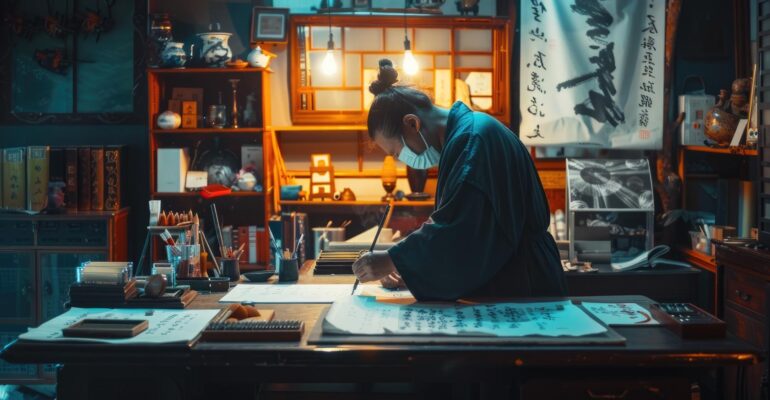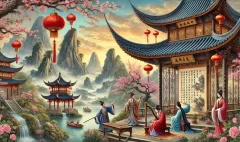From Past to Present: How Japanese Traditional Arts Influence Modern Design
From Past to Present: How Japanese Traditional Arts Influence Modern Design
The way Japanese traditional arts influence modern design is apparent in fields like architecture, fashion, and product design. Traditional elements such as minimalism, natural materials, and a focus on craftsmanship have shaped contemporary design principles worldwide. From the clean lines and open spaces in modern homes to the elegance of minimalist fashion, these influences highlight the enduring impact of Japan’s artistic heritage on today’s design landscape.
Minimalism: A Philosophy Rooted in Japanese Tradition
Japanese Traditional Architecture: Merging Heritage with Modernity
Japanese architecture, exemplified by traditional structures like the tea house and Shinto shrines, embodies these principles through their use of natural materials, open spaces, and seamless integration with the surrounding environment. Notable modern architects like Tadao Ando and Kengo Kuma draw inspiration from these traditional designs.
– Tadao Ando often incorporates raw concrete with wooden elements, reflecting the harmony found in traditional Japanese homes. His designs, such as the Church of the Light, demonstrate how minimalist forms can create powerful spiritual spaces.
– Kengo Kuma emphasizes the use of local materials and traditional building techniques. His projects, like the Asakusa Culture and Tourism Center, merge old and new, creating a dialogue between past traditions and contemporary urban landscapes.
These architects showcase how traditional Japanese aesthetics can inform modern architectural practices, creating spaces that are both functional and deeply resonant with cultural significance.
Modern Architecture Shaped by Japanese Art and Design
The influence of Japanese aesthetics extends into interior design, where simplicity and functionality take center stage. Traditional elements such as tatami mats, fusuma sliding doors, and shoji screens are being reinterpreted in contemporary settings.
– Designers often incorporate open floor plans that allow natural light to flow, mimicking the traditional Japanese approach of blending indoor and outdoor spaces.
– The concept of Ma, or negative space, is crucial in both traditional and modern design. By leaving areas intentionally empty, designers create a sense of calm and allow the mind to rest, reinforcing the minimalist ethos.
Noteworthy modern interior designers, like Nitori, are embracing these principles, crafting spaces that prioritize simplicity while celebrating natural materials and craftsmanship.
Japanese Art in Fashion: Weaving Tradition into Contemporary Style
– Designers such as Issey Miyake and Yohji Yamamoto draw upon the rich heritage of Japanese textiles, merging traditional patterns with contemporary silhouettes. Their work exemplifies how cultural narratives can be woven into modern fashion, creating pieces that tell stories while remaining wearable and relevant.
– Additionally, the concept of **slow fashion**—which emphasizes sustainability and timelessness—echoes the traditional Japanese approach to clothing, where garments are crafted to last and tell a story over time.
Wabi-Sabi: Embracing Imperfection in Global Design Trends
The principle of wabi-sabi—finding beauty in imperfection and embracing the natural cycle of growth and decay—has gained traction globally. In an era where mass production and fast fashion dominate, the idea of cherishing imperfections offers a refreshing perspective.
Canadian Indigenous artists can draw valuable lessons from the ways in which traditional Japanese arts have influenced modern design. Here are some key takeaways:
1. Integration of Tradition and Modernity:
Like Japanese artists, Indigenous creators can blend traditional motifs and techniques with contemporary forms. This fusion not only preserves cultural heritage but also makes it relevant in today’s context.
2. Embracing Imperfection:
The wabi-sabi philosophy encourages artists to celebrate imperfections in their work. This perspective can be particularly empowering for Indigenous artists, as it highlights the beauty of unique, hand-crafted pieces that tell stories and reflect personal experiences.
3. Sustainability in Materials:
The Japanese tradition of using natural materials and respecting the environment can inspire Indigenous artists to focus on sustainable practices. By utilizing local resources and traditional techniques, artists can create work that honors their heritage while addressing contemporary issues.
4. Cultural Storytelling:
Just as Japanese designers weave narratives into their work, Indigenous artists can use their creations to convey cultural stories and values. This storytelling aspect not only enriches the art but also fosters a deeper connection with audiences.
5. Community Engagement:
Both Japanese and Indigenous arts thrive through community involvement. Organizing workshops, exhibitions, and collaborative projects can create opportunities for sharing knowledge and fostering appreciation for traditional practices.
Conclusion
For Canadian Indigenous artists, there is a wealth of inspiration to be found in the ways traditional arts can be adapted and integrated into modern practices. By learning from these principles, Indigenous creators can continue to honor their heritage while making a powerful impact on contemporary design, ensuring that their stories and traditions resonate in today’s ever-evolving artistic landscape.











